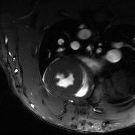Juan Felipe Pérez-Juste Abascal, Ph.D.
Researcher in medical imaging, image processing, inverse problems and deep learning
Current position as Data Scientist Innovation at Groupe SEB, Lyon, France

juanabascal78 at gmail.com
Previous projects
-
Applications:
-
Hyperpolarized gas lung MRI
-
Prospective and retrospective cardiac cine
-
Contrast-enhanced MRI
-
fMRI
-
Tagged-MRI
-
-
Optimum undersampling patterns
-
Tailored and efficient reconstruction methods
-
Real implementation on a small-animal scanner

compressed sensing MRI



compressed sensing CT
-
Applications:
-
Respiratory gated-CT
-
Radiation dose reduction
-
Limited view reconstruction
-
Contrast-enhanced CT
-
-
Influence of dose and number of projections
-
Tailored and efficient reconstruction methods

Reconstruction methods
-
Tailored reconstruction methods for each application:
-
Simultaneous motion and image reconstruction
-
Fast spatiotemporal total variation
-
Prior-based reconstruction
-
Optimum sparsifying transforms
-
-
Optimum and computationally efficient algorithms:
-
Constrained optimization
-
Efficient implementations using the Split Bregman formulation and fast forward solvers
-

PET image reconstruction
4D PET image reconstruction methods

Fluorescence diffuse optical tomography

-
Noninvasive small animal imaging using fDOT
-
Influence of scattering and absorption on the quantification of fDOT
-
Reconstruction methods:
-
Positivity constraint
-
Efficient algorithms for convex optimization, such as Split Bregman and others split operator methods
-
-
Hybrid fDOT and x-ray computed tomography system


Anisotropic EIT
-
Validation of a finite element solution for anisotropic media
-
Accurate numerical head model taking on account white matter and skull anisotropy: Assessment on forward and inverse problems
-
Rank analysis for the recovery of a conductivity tensor in anisotropic media
-
Recovery of the anisotropic conductivity tensor with known eigenvectors


EIT of brain function
-
Electrical Impedance Tomography for imaging brain function
-
Optimum selection of the regularization parameter for linear reconstruction of time difference data
-
Modelling of different variances and correlations using a general covariance of the noise
-
Principal component analysis for noise reduction
Eddy current imaging
-
Eddy-current non-destructive testing for detecting defects within a metal structure
-
Assessment of inner, outer, and through-wall void defects
-
Void defects modelled using a level set function
-
Shape reconstruction using a gradient-based level set method
